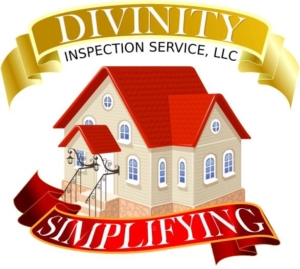What is a 4-Point Inspection?
When you want home insurance, home inspectors are an unbiased, independent third party that can assess the state of your home. A 4-point inspection is a basic, non-invasive, and non-technical inspection made to inform the insurance carrier of the house based on four main elements of your home:
- Roof
- Electrical
- Plumbing
- HVAC
All prerequisites are up to each individual insurance company. However, there are a few key elements that Divinity Inspection Service look for and report on in Tampa Bay, Florida. Let’s explore each of these areas of your property in more detail.
The 4 Aspects of a 4-Point Inspection
1. The Roof
Insurance companies prefer a 3 to 5-year life expectancy or more. There are multiple factors at play that determine how much time a roof may have left in it. An asphalt shingle roof will age faster than a tin or tile one. Inspectors may check when the permit for the roof was acquired in order to offer a better estimate of its lifespan.
Trees overhanging pose a risk and an inspector will look for evidence of the damage that fallen branches can cause. Damage such as missing or torn shingles, cracked tile, and any evidence of leaks will not be approved.
2. The Electrical System
When examining the electrical system, we look for a few major issues.
Double-Tap Breakers
A double-tap is when there is more than one wire present underneath the lug. This extra wiring could be neutral or a live wire. The only exception to this safety violation is if the breaker is rated for double-tapping. Some newer models are designed for this purpose. In this case, the wires are on different sides of the lug.
Aluminum vs Copper Wiring
When it comes to wiring, copper is king. There are many reasons why aluminum is inferior to copper, but when it comes to insurance purposes, the main concern is the fire hazards aluminum can create. Aluminum is prone to thermal expansion and contraction which increases the risk that it will loosen, slip out, and arc. Many insurance companies will refuse to insure homes with aluminum wiring no matter what. Some will only do so with certain safety precautions in place.
The worst aluminum wiring to have is single-stranded. Multi-strand aluminum is better but is still considered undesirable. It has less of a chance of coming loose but requires more material than a copper wire.
It is especially dangerous if it isn’t mitigated with coopomes or allubicome. These are small devices that connect the aluminum wiring with copper wiring in your electrical panel, and for all of your light switches, fixtures, and outlets.
Cloth Covered Wires
It’s important to note that some insurance companies will not approve homes that have cloth-covered wire. It is a controversial subject and therefore is up for personal discretion. Every insurance provider will have a different opinion.
Main electrical panel
Age and when it was last updated and that there aren’t any present blown fuses or breakers. We look for loose wires, empty breaker sockets, improper grounding, and the like.
3. Plumbing
The roof isn’t the only place that we look for leaks and other signs of water damage.
Pipes
The home inspector will check all exposed pipes for dripping, soft spots, mold, and moisture. They will also look to see what the pipes are made of. Galvanized steel and cast iron rust and will disqualify you from being covered by an insurance carrier. They want CPVC, PVC, and copper.
Hot water heater
Hot water heaters can be dangerous. At the end of their life, they have been known to explode, spraying scalding hot water in every direction, leading to water damage and potentially serious injury.
That’s why the 4 point inspection includes looking for a TPR valve with a discharge pipe, otherwise known as a blow leg. This vertical pipe should discharge water within 6 inches of the floor, directing the water safely to the floor if the water heater ruptured.
4. HVAC
- Is your condenser unit on a hurricane pad?
- What condition is it in?
- Is it stable?
- Is it functional?
- These are a few questions the home inspector will be asking themselves when they look at your HVAC.
In addition to that, they will look at the air handler for your heating system and make sure that the condensate line is draining properly and the catch pan is not full of water. The serial number on the unit will be used to indicate its age, and the model number offers.
InterNACHI Florida 4-Point Inspection
If the 4-point home inspection reports a problem that the insurance company refuses to accept, it is your responsibility as the homeowner to fix that problem. A home inspector will return to see if the issue has been remedied. If your home passes the inspection, the insurance company will cover your home.
There are many home insurance providers, each with their own unique requirements, but InterNACHI certified home inspectors like Divinity Home Inspection Services will use the InterNACHI Florida 4-point inspection form. Check it out for a more comprehensive list of what we look for.
Once you pass a Divinity Inspection Services 4-point inspection and receive home insurance, you may not be finished. If you do major repairs like installing a new roof, you will want to capitalize on discounts your insurance provider offers. In order to receive a discount, a different inspection will be performed called “Wind Mitigation.” These will be done every five years to reevaluate your home and what discounts you are eligible for. Read more about Divinity Inspection Services Wind Mitigation Inspection here.
If you have any questions about 4-point inspections or wind mitigation inspections in Tampa Bay, Florida, feel free to contact us.





Leave a Reply
Want to join the discussion?Feel free to contribute!